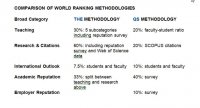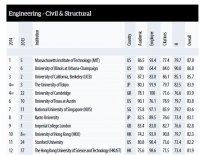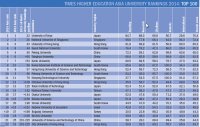QS Quacquarelli Symonds is a British consultancy that is a “global provider of specialist higher education and careers information and solutions.” The QS World University Rankings® aims “to help students make informed comparisons between their international study options.”
QS bases 50% of its rankings on two surveys: the results of a survey of over 63, 000 academics worldwide, spanning a variety of disciplines combined with the opinions of about 28, 000 international graduate employers. See Table 1. QS Methodology for a complete list of QS metrics and their weightings.
QS ranks five broad faculties and 25 specific subjects which can be further filtered by region and country. Asia, Latin America, and BRICS (Brazil, Russia, India, China and South Africa) have their own rankings using different weightings of metrics. Check information under Intelligence Unit for more in-depth information about the methodology. Unique to QS is a pilot 2014 ranking of the top 50 universities in the Arab Region.
 You must register to get access to all the QS features.
You must register to get access to all the QS features.
THE
THE’s first rankings without QS appeared in 2010/2011. It ranks 400 universities, assigning scores to the top 200, based on their willingness to participate. See Table 2. THE Methodology for THE methodology. THE also ranks by broad subject category using different weightings. Teaching accounts for 37.5% of the score for Arts & Humanities and 20% of the score for Engineering and Technology.

There are also separate rankings for the Top 100 BRICs and Emerging Economies, further expanding coverage of institutions and countries beyond the initial four hundred.
THE ROLE OF CITATION COUNT
The focus of this series of articles has been bibliometrics. Bibliometrics are not the major component of the QS and THE rankings. WOS papers and citations make up 36% of THE world rankings and vary by subject.
Arts & Humanities 18.8%
Clinical, Preclinical, Health, Life and Physical Sciences 39.1%
Engineering & Technology 32%
Social Sciences 29.9%
THE extracts data from the 12, 000 academic journals indexed by the WOS database. For 2014/2015, citation counts include indexed journals published between 2008 and 2012 and use citations between 2008 and 2013. The scores are normalized to account for variations in subject areas.










